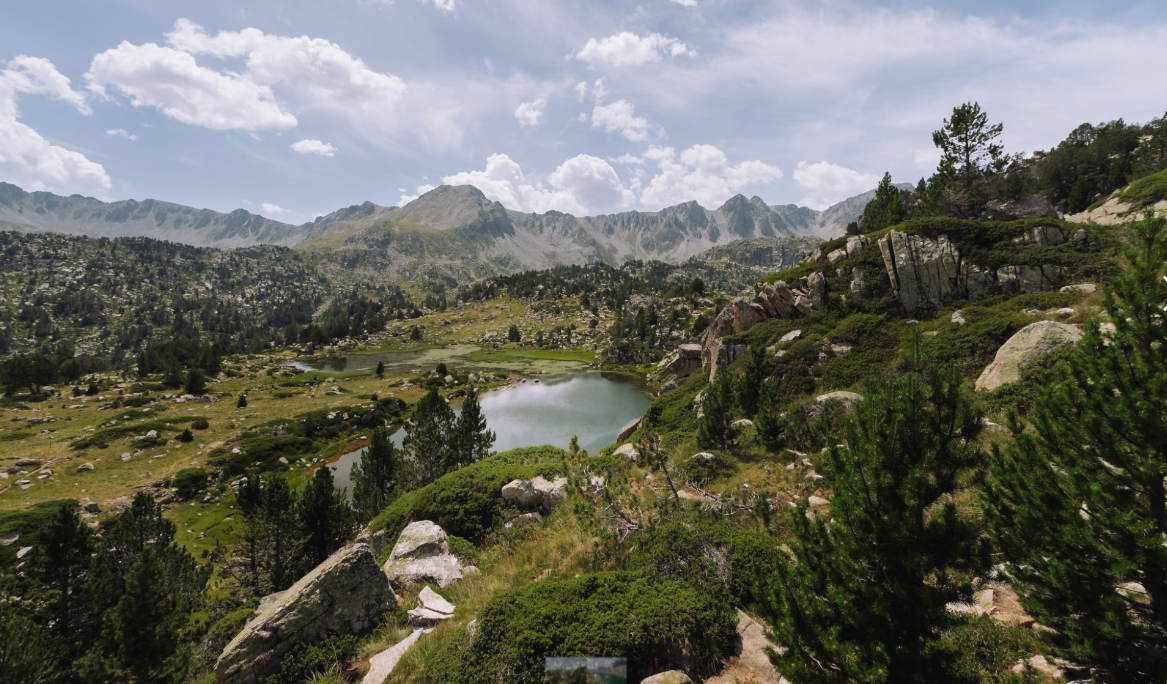A study led by CREAF researcher Judit Lecina Díaz has mapped Spain’s carbon and biodiversity hotspots, which are located in the Pyrenees and their foothills, Madrid, Cuenca, La Rioja and Andalusia, and along the coast of the Cantabrian Sea.

There are many reasons for preserving forests, but two of the most frequently mentioned are their capacity to absorb atmospheric carbon dioxide (CO2) and the biodiversity they support. In Spain, according to a study led by CREAF researcherJudit Lecina Díaz and recently published in the journal Ecological Applications, the forests that store the most carbon are often also those that are home to the greatest variety of species of trees and birds.
The relationship identified by the study is of great significance for forest management.
The study has given rise to a map of Spanish forests that are both carbon and biodiversity hotspots. In the opinion of Lecina Díaz, they are of the utmost importance and must be managed or protected to prevent any loss of their enormous natural value and their capacity to mitigate the effects of climate change. In the light of the direct relationship between the two characteristics, the study recommends implementing combined management and conservation strategies to preserve or increase the forests’ carbon stocks and the diversity of their tree and bird populations.
The researchers found that high tree density and structural diversity (species of different sizes, with different amounts of branches) are conducive to forests having high carbon and biodiversity values.
“The more trees a forest has, the more carbon it can build up”, says Lecina Díaz. “If its trees are of different types, they compete less for sunlight and other resources, grow more, and can support more species”, she explains. “Denser, more diverse forests offer birds a greater variety of food and nesting places”, she continues. The researchers observed that isolated mountainous areas with steep slopes are particularly favourable to high carbon stocks and tree and forest bird diversity. “Such places are generally inaccessible to people, so forests and the bird species that live in them grow and develop better there than they would under human pressure”, remarks Lecina Díaz.

Spain’s most carbon and biodiversity-rich forests lie in the Pyrenees and their foothills, Madrid, Cuenca, La Rioja and Andalusia, and along the coast of the Cantabrian Sea
The map of hotspots produced by Lecina Díaz and her team of researchers from CREAF, the Forest Science and Technology Centre of Catalonia (CTFC), the University of Santiago de Compostela and the Autonomous University of Barcelona (UAB) shows where Spain’s most carbon and biodiversity-rich forests lie. Some are located along the coast of the Cantabrian Sea, mainly in the Basque Country, northern Navarra, Asturias and parts of Galicia. Others are in the Pyrenees and their foothills, the Catalan Pre-coastal Range, and Catalan and Valencian port towns. Others, meanwhile, are found further inland, in areas such as Sierra de Cebollera (La Rioja), Sierra de Grazalema (Andalusia), Serranía de Cuenca (Castile-La Mancha), and Cuenca Alta del Manzanares and Sierra de Guadarrama (Madrid).

Part of the study was carried out in Canada, thanks to a team of Portuguese and Canadian collaborators, providing equivalent results for Quebec.
The team’s research could aid decision-making related to environmental management policies. In particular, forest management and conservation policies ought to take the two indicators in question (carbon stocks and biodiversity) into account, as well as the variables that affect them (given that whatever has a positive influence on one of them tends to also benefit the other), with a view to applying effective measures for both nature conservation and climate change mitigation.

Article relacionat:
Lecina‐Diaz, J., Alvarez, A., Regos, A., Drapeau, P., Paquette, A., Messier, C., & Retana, J. (2018). The positive carbon stocks‐biodiversity relationship in forests: co‐occurrence and drivers across five sub‐climates. Ecological Applications.






